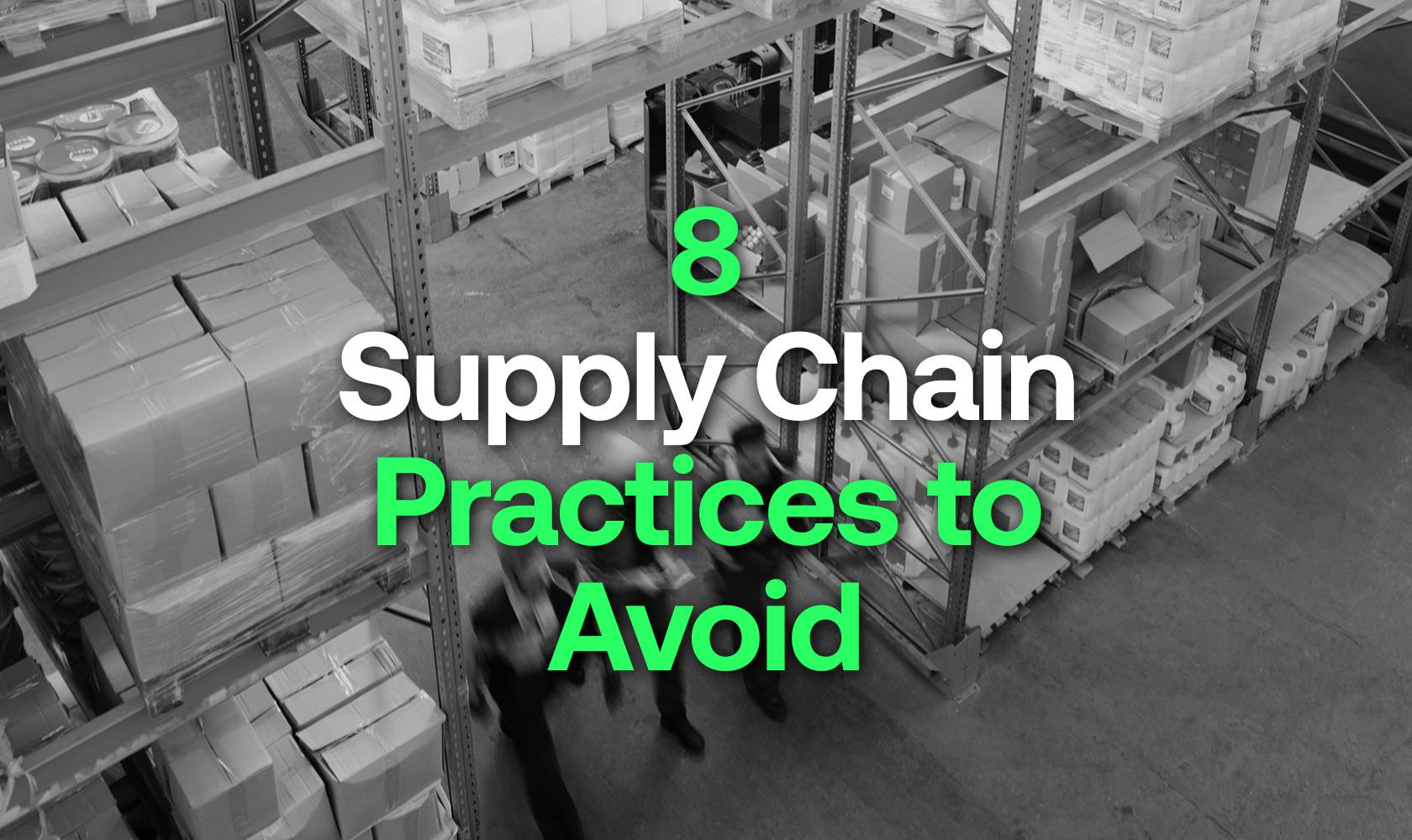Budgets are tight. Consumer expectations are increasing. And every day seemingly brings a new competitor into the mix.
If you’re responsible for growing your e-commerce business and/or managing your DTC & B2B supply chain operations, we know you’re facing a slew of challenges. And simply throwing more money or people isn’t an option, even if it would prove effective, which you know likely wouldn’t.
But what are the biggest challenges facing brands like yours - and what can you do about them?
The team of supply chain and logistics experts at Stord have some best practices to overcome the types of problems you’re probably facing, or will soon enough. From supporting more sales channels to overcoming budget constraints to growing your e-commerce business rapidly yet intelligently, following the right practice can ensure you keep things heading in the right direction.
What is the biggest logistics challenge facing e-commerce/DTC & B2B companies this year and how can it be overcome?
(And what should e-commerce/DTC & B2B companies be doing to get ahead of these challenges?)
Deploying Modern E-Commerce Strategies
Leveraging modern e-commerce strategies like pre-orders, influencer marketing, order consolidation (combining multiple orders into a single shipment), bundles, and upsells is currently a major operational and technical challenge for most DTC brands.
Legacy systems are not built to allow brands to self-service manage these capabilities, limiting how much investment brands can make in these growth strategies. A modern OMS is; it can alleviate the effort and energy needed to pursue these strategies and can drive growth – while continuing to drive operational costs down through intelligent orchestration and automated decisioning.
Ryan Andrews, Group Product Manager
Growing Your Brand Through More Sales Channels
The biggest challenge facing e-commerce brands is enterprise architecture and channel expansion. Both are tied to the growth of the brand, and both will become increasingly complex with a need to hire more resources to manage.
It's important to partner and select the right technology partners that can take on the role of many disparate systems - this will ensure a less complex architecture and a source of truth. Be sure to select technology partners that also have experience and value propositions specific to channel expansion.
One of the biggest pain points here is how much to promise and sell on each channel – brands should be prioritizing their highest margin channels and their largest B2B relationships. The right multichannel order and inventory management system can ensure you’re not underselling or overselling, harming your revenue growth, customer experience, or both!
Josh Monski, Solutions Architect, WMS & OMS
Get a logistics partner to help overcome your biggest e-commerce challenges
Partnering with the Right 3PL
Coming out of the challenging conditions faced over the last several years, DTC and B2B brands should be looking at how to truly optimize their supply chains. Without doing so, their operating performance – and the resulting experience they’re delivering to their end consumers – will suffer.
Brands should be looking holistically at their businesses and evaluating the ways a 3PL partner can deliver a truly customized solution encompassing both DTC and B2B fulfillment along with the software to manage it and be responsive to its customers. It’s the only way to ensure they meet their specific client requirements and can truly fuel their supply chain as a competitive advantage.
Ben Daugherty, Senior Account Executive
Facing – and Overcoming – Economic Headwinds
The foremost challenge confronting DTC and B2B companies this year is the economic downturn, posing obstacles such as reduced consumer spending and disrupted financial landscapes. To navigate this challenge, companies should focus on strategies like diversifying revenue streams, optimizing operational efficiency to counter cost pressures, and fostering agility to adapt to changing market conditions.
Embracing innovative technologies, reinforcing strategic partnerships, and implementing prudent financial management practices are essential steps to not only overcome the economic downturn but also position for long-term resilience and growth.
Tony Scharff, WMS Super User
Growth in a Cost-Conscious World
In today’s budget-conscious and belt-tightening “do more with less” environment, keeping expenses under control is paramount for fast-growing e-commerce brands.
Facing fluctuating costs of freight and increasing costs of parcel, warehousing, and labor requires improved inventory forecasting and more strategic thought for inventory placement across a network of fulfillment capacity.
Brian Lemerise, SVP Fulfillment
Managing an Agile Supply Chain Effectively
Agile supply chain management is crucial for businesses, like e-commerce/DTC & B2B companies, facing constant change. Its adaptability ensures quick responses to market shifts and unforeseen events, reducing response times and enhancing customer satisfaction. By fostering flexibility, it allows efficient adjustments in production and distribution. This approach also mitigates risks through effective risk assessment and collaboration among stakeholders.
Agile practices optimize inventory management, promoting cost efficiency and lean inventories. Moreover, they cultivate a culture of innovation, contributing to continuous improvement.
In today's global markets, agility enables companies to navigate international complexities, fostering competitiveness. Overall, agile supply chain management is essential for organizations aiming for responsiveness, resilience, and sustained success amid dynamic business environments.
Alex Kent, Director of Strategy & Innovation
Intelligent Growth
In the coming years, high-growth consumer brands will face significant challenges when raising growth capital as sources dry up or become more restrictive. To survive and thrive, brands must improve their gross margins, increase cash flow, and efficiently deploy their capital! Consider the risk of capital being tied up indefinitely in the form of aging inventory; how might this affect your brand's operating or growth plan?
Growth will always be an essential driver of success, in 2024 and beyond. However, growth should be 'intelligent,' avoiding pitfalls made in 2020 through 2022. Brands must take an aggressive approach to optimizing inventory levels, avoiding 'over-stocking' for hypothetical demand.
Furthermore, parcel/shipping-related costs are another critical area of focus. Tackling raising costs by reducing the amount of shipping costs "eaten" by the brand OR by finding strategic solutions/partners to help reduce and optimize parcel spend through parcel optimization software and carrier management and diversification.
Ajit Sreenivasan, Senior Product Manager
Unrelenting Need to Boost Consumer Experience
The biggest challenge is one that never seems to go away. Consumers will continue to demand an exceptional experience (i.e., the Amazon effect), putting additional pressure on growing brands to execute operationally, thus requiring access to tools like a multichannel order & inventory management system (OMS), parcel optimization, inventory planning etc., ideally all within a single platform.
Allan Simons, Senior Account Executive
Actions E-commerce/DTC & B2B Companies Can Do Today
Brands can take the right moves.
Deploy the modern e-commerce practices to deliver the consumer experience your customers expect. Rapidly add new sales channels and retail partners immediately rather than lose revenue due to another IT morass. Make more accurate inventory forecasts to ensure you have the right inventory, either in your own facility or in your 3PL partners’ (and make sure your 3PL partner is the right one for your particular business!)
It comes down to a few core components. The right partner. The right practices. The right technology. And most importantly, ensuring these elements all operate cohesively.
How to do that smartly, quickly and cost-effectively? Partner with an experienced e-commerce supply chain leader like Stord that can provide you the DTC & B2B fulfillment, transportation and integrated technology solutions you need to scale your high growth, multichannel brand.
If you're looking to use your supply chain to accelerate your e-commerce business growth, let's talk.








